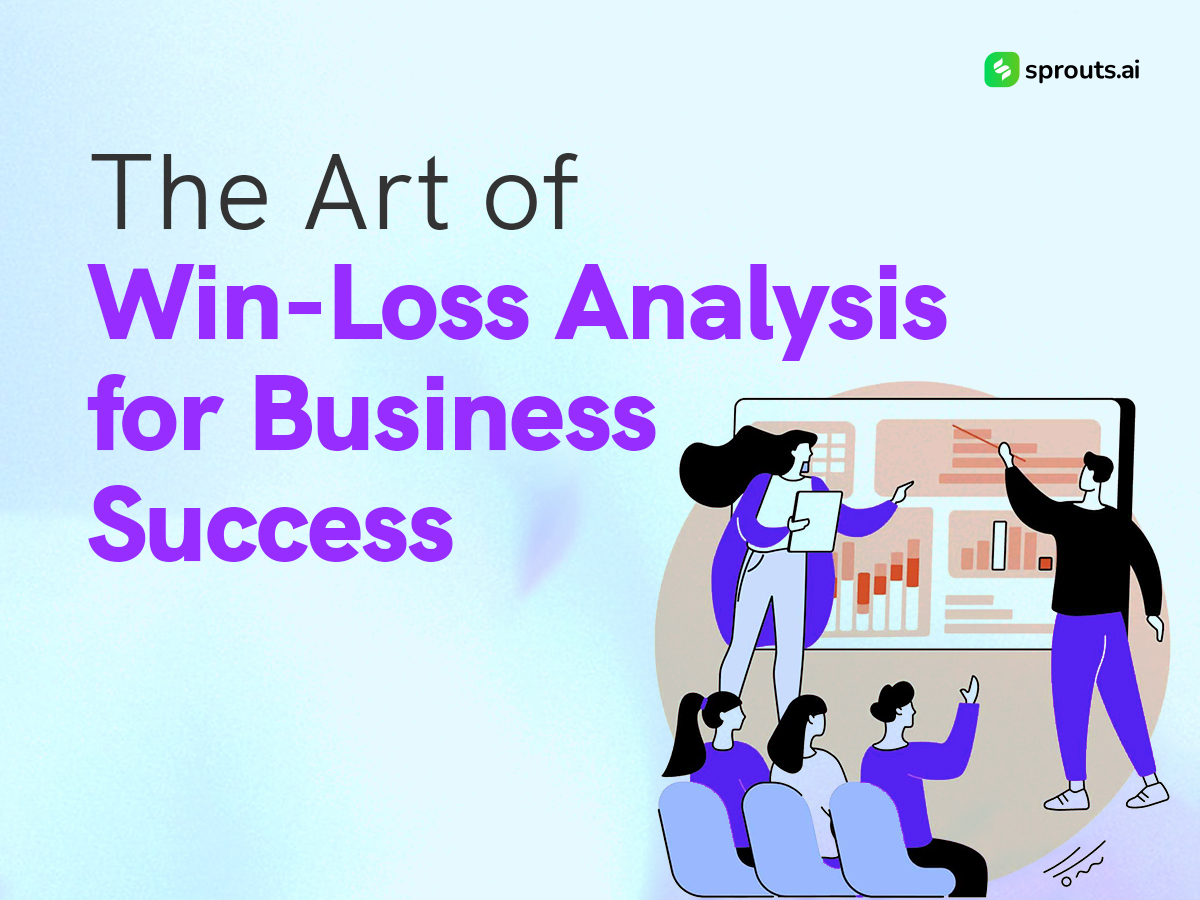Gaining a competitive edge is crucial for sustained success in sales. One invaluable tool that often needs to be utilized is the practice of Win-Loss Analysis. This strategic approach allows companies to dissect their victories and losses, extracting valuable insights to refine strategies, improve customer engagement, and enhance their overall market presence. In this blog, we’ll delve into Win-Loss Analysis, uncover its benefits, explore the process, and discover how it can catalyze thought-provoking discussions within your organization.
Understanding the Essence of Win-Loss Analysis
Win-Loss Analysis is more than just a post-mortem examination of closed deals; it’s a systematic method for evaluating what went right and wrong during sales. Whether you’re celebrating a win or lamenting a loss, an abundance of information is waiting to be harnessed.
1. The Benefits:
Refine Your Strategy: Win-Loss Analysis helps you identify trends and patterns, enabling you to adjust your strategies for improved performance in the future.
Enhance Customer Insights: Understanding why customers choose or reject your product/service can guide improvements and boost customer satisfaction.
Competitor Intelligence: Uncover your strengths and weaknesses compared to competitors, aiding in a more targeted competitive strategy.
Product Development: Learn what features or aspects customers value most, influencing your product development roadmap.
Sales Training: Gain insights into the effectiveness of your sales team’s techniques, facilitating targeted training.
2. The Process:
Data Collection: Gather as much information as possible about the sales process, including interactions, negotiations, and decision-making factors.
Segmentation: Categorize wins and losses based on factors like industry, company size, and decision-makers involved.
Interviews: Conduct in-depth interviews with both successful and unsuccessful prospects. Ask open-ended questions to uncover their decision criteria.
Competitive Analysis: Compare your offerings with competitors in pricing, features, and customer support.
Identify Patterns: Look for common threads among wins and losses. Is there a pattern in the type of objections raised or in the decision-making timeline?
Actionable Insights: Translate your findings into actionable recommendations for various departments, such as sales, marketing, and product development.
3. Thought-Provoking Conversations:
Win-Loss Analysis can be a catalyst for thought-provoking discussions within your organization:
Cross-Departmental Collaboration: Analyzing wins and losses encourages different departments to share insights, fostering a culture of collaboration.
Innovation: Identify gaps in your product or service that may have contributed to losses. This insight can drive innovation and improvement.
Data-Driven Decision Making: Base your strategies on concrete data rather than assumptions, making your organization more agile and responsive.
Continuous Improvement: Encourage a mindset of constant improvement, where every win is celebrated, and every loss is seen as an opportunity to learn and grow.
Real-Life Illustration:Consider a scenario where a software company experiences a series of lost deals. Through Win-Loss Analysis, they uncovered that prospects valued robust customer support. This revelation prompts the company to enhance its support offerings, leading to increased customer satisfaction and more closed deals.
Win-Loss Analysis isn’t just about dissecting deals; it’s about cultivating a culture of learning and adaptation. By embracing this practice, businesses can gain a competitive edge, drive innovation, and position themselves for long-term success. So, the next time you face a win or a loss, remember that the real victory lies in the insights you gain. Win-Loss Analysis serves as a compass, guiding you towards strategic decisions that truly resonate with your audience. Embrace this practice not merely by examining past events but as a transformative journey towards a brighter business future.

